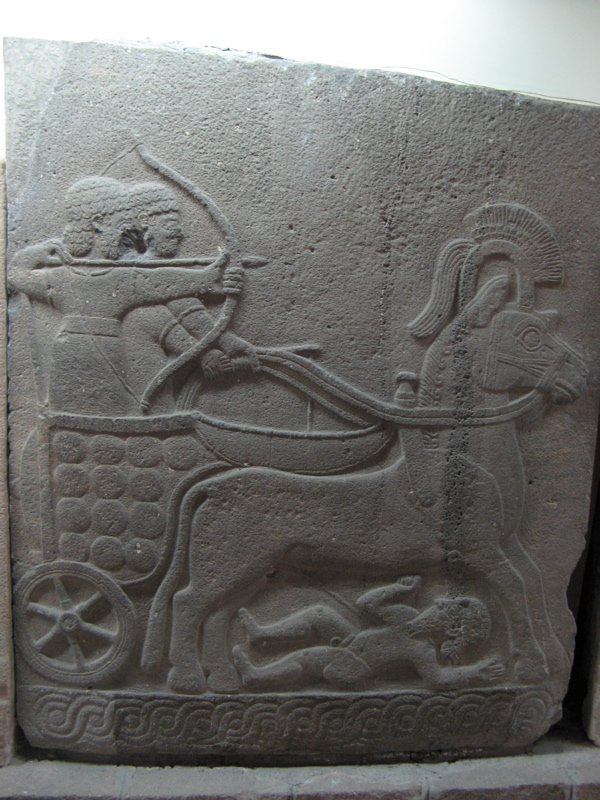

Before we had started our visit in the museum, we had split a simit
while sitting in the garden. We experienced our first call to prayer
then. From each mosque, verses of the Koran are chanted over the
loudspeakers attached to the minarets. It becomes a chorus of voices
with that wonderful middle Eastern/Asian combination of notes. It
would become our replacement for the chorus of church bells we hear
regularly in Heidelberg.
After spending many hours in the
museum, we walked up the (very steep) hill to the nearby citadel. The
view from the top of the hill reinforced how big and spread out the
city is. Lots of terracotta roofs and minarets filling the hillsides.
The fortress's main parts date from the 600's (!) and there are about
40 polygonal towers around the defensive walls. Makes it look
different from Western castle walls. We went through one of the gates
and past some timbered houses and started down the narrow laneways.
Ends up that people live here in some of the most run-down houses we
have seen (or had seen up to
this point). There were a few old houses that had been restored into
nice-looking restaurants, but mostly it was depressing looking. We
were walking down one narrow street and were worried that it was
turning in the wrong direction and would not lead us out the way we had
come in. We started to turn around to go back and a woman we had just
passed sitting on her doorstep indicated that we should continue on. (Somehow
the Turks were always able to pick out that we were tourists.) We did,
and very shortly found ourselves where we wanted to be. Once again
language barriers did not block their friendly help.